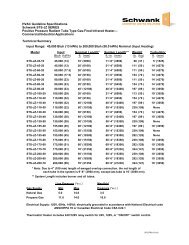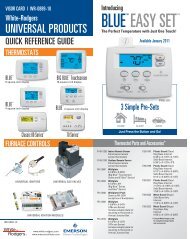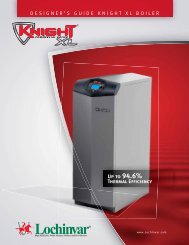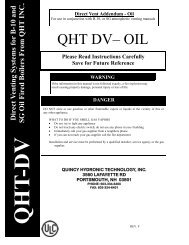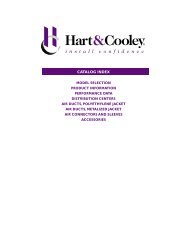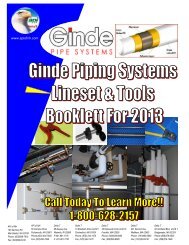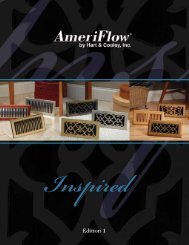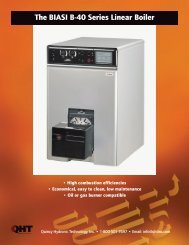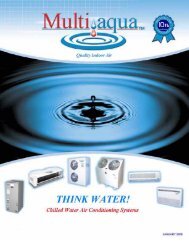Tankless Water Heater - Waiwela
Tankless Water Heater - Waiwela
Tankless Water Heater - Waiwela
Create successful ePaper yourself
Turn your PDF publications into a flip-book with our unique Google optimized e-Paper software.
Installing the water heater:2’(61 cm)Max.94° ElbowFireStop7/8" per footdownward slopeInspectionAccess Panel #1CeilingBoardVent PipeWall PlatesInspectionAccessPanel #2Venting Through Closed SpacesIf the coaxial vent piping passes through a closed space, a minimumclearance of 1” (2.5 cm) when installed horizontally or 6” (15 cm) wheninstalled vertically should be maintained between the coaxial vent pipeand combustibles and noncombustibles. Be sure to follow local codesand vent manufacturer’s installation instructions.For maintenance and inspection purposes, the following access panelsare required.● Two (2) inspection access panels large enough to allow access forventing inspection. One (1) of these access panels should be closeto where the coaxial vent pipe enters the ceiling. The other accesspanel should be near the vent termination.● A ventilation access panel with a 16 in 2 (103 cm 2 ) opening shouldbe provided every 10 ft (3 m).CAUTION: Ensure thatthe appliance vent adapter issecurely attached to the waterheater collar.ExhaustFlowAApplianceVent AdapterCollarAppliance Vent AdapterThe water heater must be installedwith a UL 1738 approved Category IIIStainless Steel appliance coaxial ventadapter.Read the following instructions beforeinstallation.● Test fit the adapter over the water heatercollar before proceeding.● Slide adapter end “A” down over heatercollar “B” as far as it will go.● Use the screws provided with the ventadapter to attach the adaptor to the heatercollar.NOTICE: Follow the appliance coaxial ventadapter manufacturer’s instructions.B<strong>Water</strong> <strong>Heater</strong>CAUTION: Condensateis known to be acidic; referto local, state (provincial)or federal codes for properhandling and dischargemethods.CAUTION: Condensatemust drain away from thewater heater and shouldnot be allowed to drainback into any part of thevent system.WARNING: Failure toprovide a vent condensatedrain close to the appliancecould allow acidic flue gascondensate to enter intoappliance flueways, causingpremature failure of theappliance.Draining the CondensateProvision should be made to collect anddispose of condensate from venting systems.When a water heater is vented horizontally,the vent pipe can have a DOWNWARD orUPWARD slope towards the termination. Ifan UPWARD slope is used, a condensate trapmust be installed as close as practical to thewater heater in order to prevent condensatefrom draining back into the water heater.See Examples A and B on page 13 and 14for DOWNWARD and UPWARD slope forhorizontally vented water heaters.When a water heater is vented vertically,an UPWARD slope must always be used.A condensate trap must be installed in thehorizontal section of the vent and as closeas practical to the water heater in order toprevent condensate from draining back intothe water heater. See the diagram on page 14showing UPWARD slope for verticallyvented water heaters.Always attach a drain hose to the drain fittingand plumb the hose to a sanitary sewer drain.A high temperature silicone tubing suitable foruse with acidic condensate and appropriate forthe temperature range should be used.The drain tube is fashioned into a “pigtail” trapand must be filled with water to prevent fluegases from emitting into the building prior tooperating the appliance.10AP14558-1 (09_08) DV 66 Manual.indd 109/17/2008 3:07:55 PM



